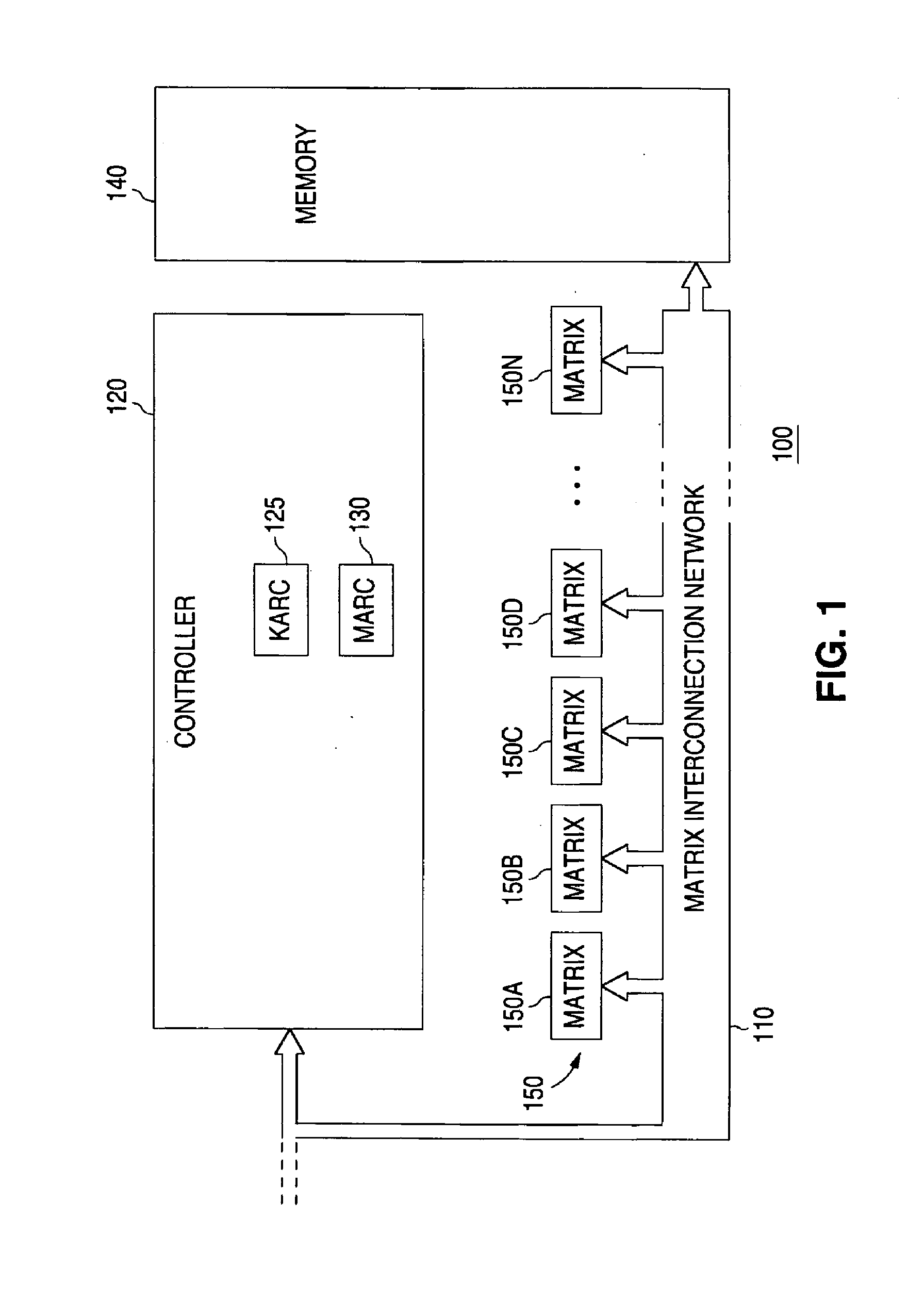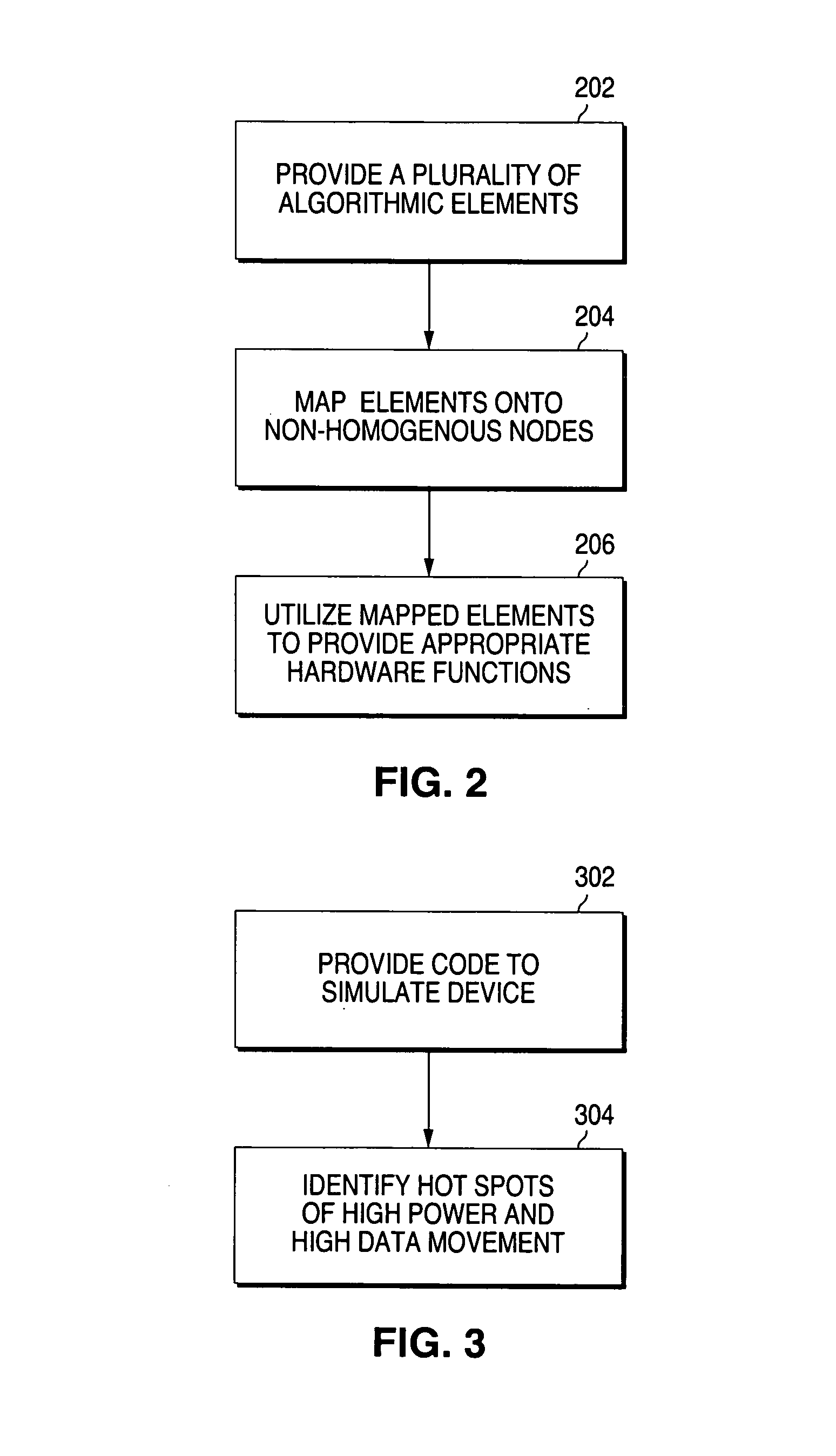Method and system for creating and programming an adaptive computing engine
a computing engine and programming method technology, applied in the field of adaptive computing machines, can solve the problems of increasing the size of the silicon, requiring the device to be small, low-power, light-weight and feature-rich, and bounded by cost constraints
- Summary
- Abstract
- Description
- Claims
- Application Information
AI Technical Summary
Benefits of technology
Problems solved by technology
Method used
Image
Examples
Embodiment Construction
[0034]The present invention provides a method and system for optimizing operations of an ACE. The following description is presented to enable one of ordinary skill in the art to make and use the invention and is provided in the context of a patent application and its requirements. Various modifications to the preferred embodiment will be readily apparent to those skilled in the art and the generic principles herein may be applied to other embodiments. Thus, the present invention is not intended to be limited to the embodiments shown but is to be accorded the widest scope consistent with the principles and features described herein.
[0035]An approach that is dynamic both in terms of the hardware resources and algorithms is emerging and is referred to as an adaptive computing engine (ACE) approach. ACEs can be reconfigured upwards of hundreds of thousands of times a second while consuming very little power. The ability to reconfigure the logical functions inside the ACE at high speed ...
PUM
 Login to View More
Login to View More Abstract
Description
Claims
Application Information
 Login to View More
Login to View More - R&D
- Intellectual Property
- Life Sciences
- Materials
- Tech Scout
- Unparalleled Data Quality
- Higher Quality Content
- 60% Fewer Hallucinations
Browse by: Latest US Patents, China's latest patents, Technical Efficacy Thesaurus, Application Domain, Technology Topic, Popular Technical Reports.
© 2025 PatSnap. All rights reserved.Legal|Privacy policy|Modern Slavery Act Transparency Statement|Sitemap|About US| Contact US: help@patsnap.com



